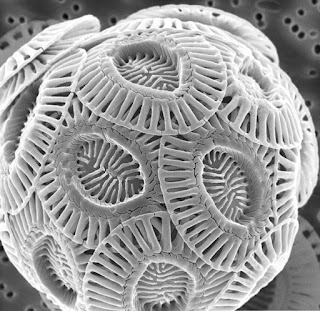Thin sheets of sediment,
amorphous phyllo,
acres in extent, are
buried under flows
of gravel, mud or lava;
each horizontal layer
descends beneath the
weight of new deposits
and in the process
sheds its water and its air.
As pressure forces grains
together, coats them
with a fine cement of
minerals emerging
slick from their dense solutions,
new rock begins to grow
like baklava, placed
down in sheets of phyllo,
honey, butter, nuts
in shallow pans of salten sea,
and even as the rock
is formed, the sea with
its encompassing land
moves gently forward
to converging boundaries,
where continents collide
with oceans, islands
form and disappear, where
sheets of rock slide down
to fiery depths, are shaken,
torn, and softened so the
sheeted layers of rock
can now be pushed and pinched
and pleated into
vast accordions of stone.
There, too, in infinite,
slow, furious, tumult,
the very substance of
the rock is changed, its
molecules and atoms shift,
bonds break, decay, re-form
on microscopic
dancing floors where atoms
waltzing, reeling, twirl
new substance into being.
Limestones turn to marble
then, and shales to slate
and schist; new rocks emerge,
new stones are born as
matter glides to sleeker form.
Immensities of rock
are sunken, twisted,
cooked, like crumpled sheets of
baklava, which baked
in subterranean stoves, will
someday rise and rising
shake the very earth
which they create and then
in geologic
time, dissolve and start anew.
Shape-shifting stone that slides
into fresh form and
essence new, as heat and
depth and time supply B
this is metamorphic rock!
Sr. Sue Elwyn, SSJD
St-Lambert, QC 2005
 |
| Pu‘u ‘Ō‘ō Eruption 1983 . USGS |



